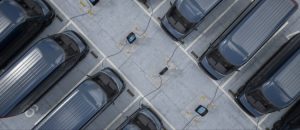Volkswagen’s ID.3 retained 91% of its battery capacity after four years of intensive testing that included 107,000 miles and deliberately harsh charging practices, according to ADAC, Germany’s leading automotive organization.
The testing organization’s engineers pushed the 77kWh ID.3 Pro S through conditions far more demanding than typical daily driving. They ignored standard battery care recommendations and used rapid charging for 40% of all charging sessions.
ADAC’s test deliberately stressed the battery by leaving the car plugged in at 100% charge for days at a time – a practice that’s known to impact long-term battery health.
Despite this treatment, the ID.3’s effective range dropped just eight miles over the entire testing period.
Battery Performance Exceeded Warranty Standards
The 9% capacity loss falls well within Volkswagen’s warranty terms, which guarantee at least 70% usable capacity after 160,000 kilometers.
ADAC’s testing showed the battery degradation followed a predictable pattern. The car retained 96% capacity at 13,500 miles, dropping gradually to 91% by 90,600 miles where it stabilized for the remainder of testing.
The ID.3 started with a real-world range of 272 miles based on ADAC’s testing methods. After 107,000 miles, that figure stood at 264 miles.
Software Updates Improved Efficiency
Over-the-air updates actually enhanced the car’s performance during the testing period. Laboratory efficiency improved from 3.1 miles per kWh when new to 3.4 miles per kWh after four years.
Charging capabilities also received upgrades through software updates. Peak charging power increased from 125kW to 160kW, with improvements to the charging curve that reduced overall charging times.
In real-world driving conditions over 107,000 miles, the ID.3 averaged 2.7 miles per kWh.
The ADAC results align with broader industry data showing battery degradation concerns are often overstated. Recent estimates from Geotab indicate modern EVs lose approximately 1% of capacity annually under normal use.
Independent research from Which? supports these findings, while battery specialists at Generational note that degradation rates continue improving as manufacturers refine battery technology and thermal management systems.
The ID.3 was ADAC’s first electric vehicle to complete their comprehensive long-term testing protocol, which aims to reach 160,000 kilometers as quickly as possible through intensive use patterns.





